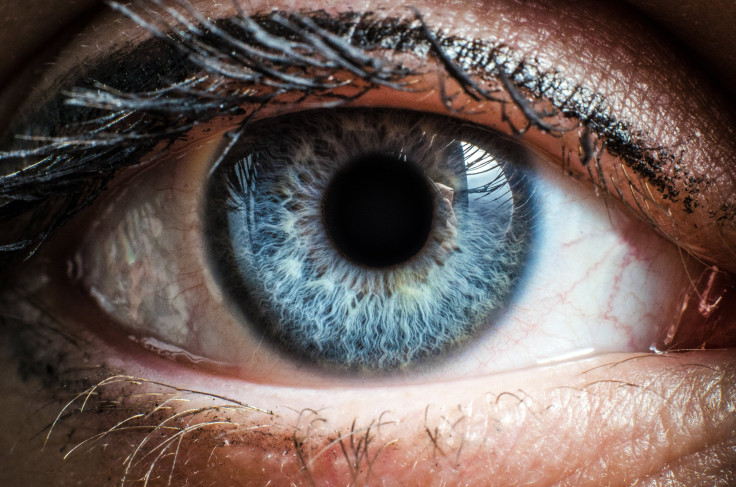Special Snowflake: 4 Things (Other Than Your Fingerprints) That Make You 1 In 7.2 Billion

Anyone who knows anything about crime knows one of the first things detectives look for at a crime scene is fingerprints, those unique markers left by the ridges on everyone’s fingers. These impressions have been used as personal signatures for thousands of years, going as far back as 300 B.C. in China, where letters would be sealed with clay and impressed with the authors fingerprint. And in the late 1800s, a medical missionary in Japan named Henry Faulds was the first to publish research in a journal about the uniqueness, and potential for individualization, of these ridges.
It was around this time that fingerprints, with their loops, arches, and whorls, became an identifying factor in criminal cases. Sir Francis Galton, a jack-of-all-trades in many things scientific, calculated that the probability of two whole fingerprints matching was somewhere around one in 64 billion — making your fingerprints uniquely yours out of the 7.2 billion people around the world. While it’s debatable how accurate that is (not everyone’s had their fingerprints taken, obviously) and how well forensic scientists can identify a person with them, the general consensus is they’ve been more accurate than not.
But what about other parts of the body? Most of us like to believe in our individuality; surely there’s more to our bodies that make us one in 7.2 billion. Well, here are five things that are (most likely) especially you that you can be proud of.
Your Ears
Chances are you don’t think too much about your ears besides what they’re used for. But if you think about it, every person’s ears has rather unique curves and ridges, the most prominent of which is the helix — the ear’s rim. Unlike fingerprints, which can become scarred or worn down, the overall pattern of our ears’ ridges stays the same as we age, according to researcher from the University of Southampton.
“When you’re born, your ear is fully formed. The lobe descends a little, but overall it stays the same,” lead researcher and computer scientist Mark Nixon said in 2010, when the research was presented at the IEEE Fourth International Conference on Biometrics. Nixon’s team developed an algorithm called “image ray transform” that could identify a person out of 252 others with 99.6 percent accuracy. The software analyzed how light reflected off the curved features of the participants’ ears thousands of times, and from that created a clear image of the ear.
While the software has its limitations, such as the possibility of inefficient lighting or a person wearing jewelry — which can also change the shape of the ear — the researchers argue it should be used as a supplement to fingerprints when identifying a person. With that said, you’ll find a lot of these unique features are applied in forensics.
The Iris
Along with fingerprint and retina scanners, iris scanners have become another useful tool for protecting highly secure information and areas. The iris is the muscle in the eye that controls the size of the pupil, and it also gives our eyes color based on the amount of melatonin within. (It shouldn’t be confused with the retina, which is a light-sensitive layer of tissue lining the back of the eye.)
Iris scanning is useful because while “the coloration and structure of the iris is genetically linked, the details of the pattern are not,” the Federal Bureau of Investigation’s website says. The iris grows in the womb from tightly folded tissue membranes, and then just before birth, it degenerates to expose the pupil. When this happens, the iris’ unique structural pattern is formed.
Your Tongue
While a person’s teeth, and their bite marks, have been analyzed in courts since the 1970s, the most unique part of the mouth might just be the tongue. As mentioned before, fingerprints can change slightly over time, but the tongue almost always stays the same, since it’s protected inside the mouth.
A report in the journal Advances in Biometrics suggests that the tongue may be a useful tool for identification, as it is “unique to each person in its shape and in its surface textures.” The researchers also noted the tongue is the “only internal organ that can quite normally and easily be exposed for inspection,” and that it’s shape doesn’t typically change — “its physiological textures are invariant even as the coating of the tongue changes.”
While it hasn’t been proven that each person’s tongue is unique to themselves, other researchers say these characteristics along with the inability to forge a tongue print make it a viable option for identifying suspects. However, that will have to be proven through further research.
Your Gait
How many people slouch in this world, or bounce on one foot while walking, or drag their feet. Everyone walks in their own way, and it’s not just how their legs move that counts; it’s how their entire body moves. This concept is known as a person’s gait, and researchers have found analyzing what seem to be 24 components of it could accurately identify a person.
If you ask us, that amalgamation makes a person’s gait unique. Multiple studies have looked analyzed the way people walk differently. One study, for example, builds on a technique called “gait energy image,” which creates a computer image of a silhouette with a characteristic gait. Researchers added features that allowed the computer to pick up on shadows on their clothing, and along with Microsoft’s gaming sensor Kinect, which could measure depth, the system was 80 percent accurate at recognizing participants.
Various other programs also work to analyze gait, such as the one below. While most of them probably aren’t as accurate as the one used in the study, the research is promising.
Published by Medicaldaily.com



























